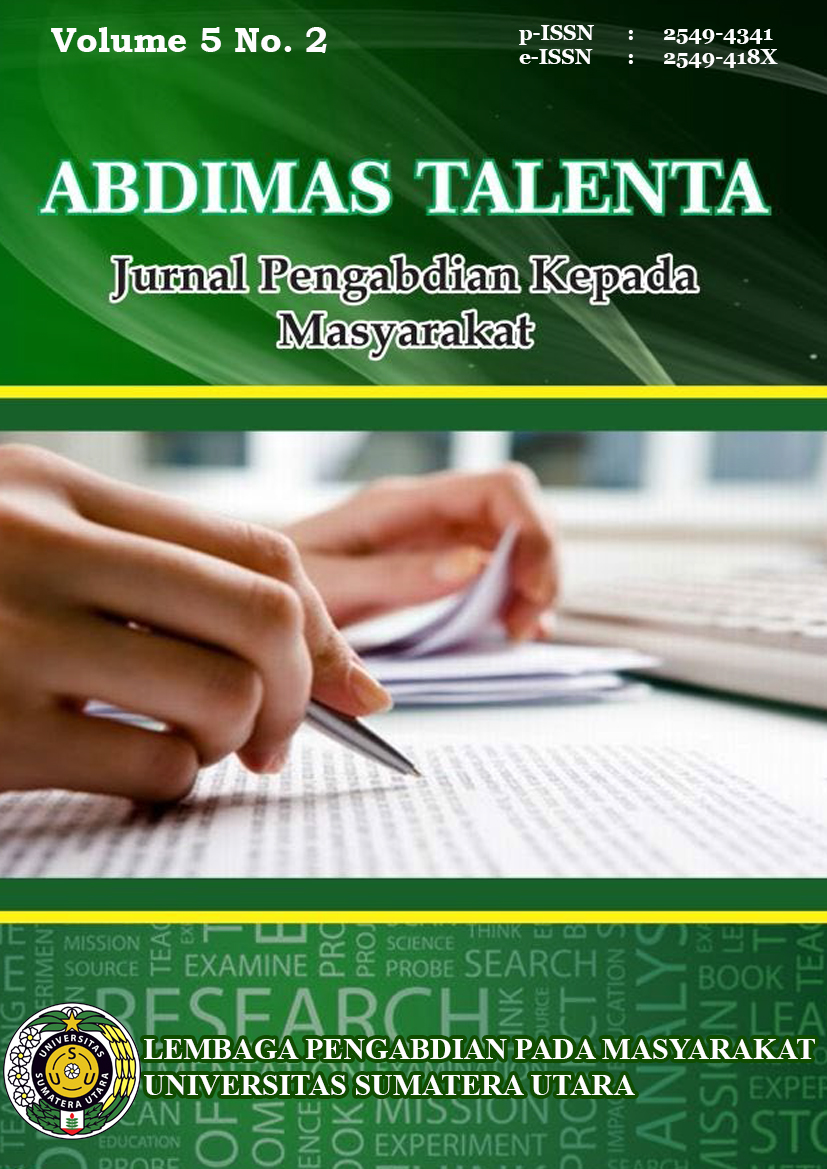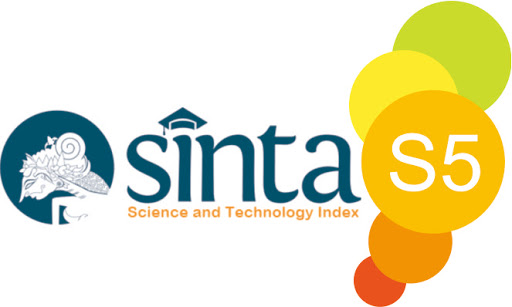The The spawning aplication of Koi (Cyprinus carpio) using semi-natural method in Desa Perbarakan, Deli Serdang Regency
DOI:
https://doi.org/10.32734/abdimastalenta.v5i2.4922Keywords:
koi fish, spawning, semi-natural methodAbstract
Based on statistical analysis from Dinas Kelautan Perikanan, Deli Serdang Regency in 2018, The capacity for freshwater aquaculture output was recorded at 1328.9 tons / year with a land area of 65.9 ha , which is a problem for the aquaculture community with the decreasing quantity of seed production, limited infrastructure and development management which is still conventional in Desa Perbarakan, Deli Serdang Regency, therefore it is important to implement the required application of science and technology, namely the implementation of semi-natural methods of spawning techniques of koi fish (Cyprinus carpio). Counseling, seminars and practices are the methods of tasks carried out. Extension activities were carried out by illustrating the conceptual awareness of the development of koi fish spawning strategies, the distribution of leaflets, the application of recognition technology, as well as tools and resources, including the dose of gonadotropin hormone (GnH) in broodfish and fish anaesthetic techniques. For female fish, the injected hormone level is 0.5 ml / kg and 0.1 ml / kg for male fish. The weight of the female fish is 1 kg tancho sanke doitsu, 0.5 ml/gr, and the weight of the male fish is 1 kg. At a dose of 0.1 ml / gr and 900 g of shiro, kohaku at a level of 0.09 ml / gr. The result is that the number of eggs is estimated at 10,000, and then the eggs hatch within 2-4 days. Boiled egg yolks are fed to the eggs which hatch into the larvae, then the larvae are transferred to the nursery pon after 10 days of age.
Downloads
Downloads
Published
Issue
Section
License
Copyright (c) 2020 ABDIMAS TALENTA: Jurnal Pengabdian Kepada Masyarakat

This work is licensed under a Creative Commons Attribution-ShareAlike 4.0 International License.
The Authors submitting a manuscript do so on the understanding that if accepted for publication, copyright of the article shall be assigned to Jurnal Abdimas TALENTA as well as TALENTA Publisher Universitas Sumatera Utara as the publisher of the journal.
Copyright encompasses exclusive rights to reproduce and deliver the article in all forms and media. The reproduction of any part of this journal, its storage in databases and its transmission by any form or media, will be allowed only with written permission from Jurnal Abdimas TALENTA.
The Copyright Transfer Form can be downloaded here.
The copyright form should be signed originally and sent to the Editorial Office in the form of original mail or scanned document.












